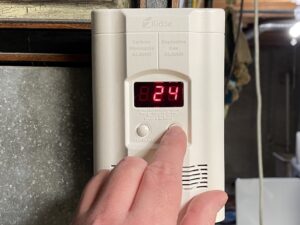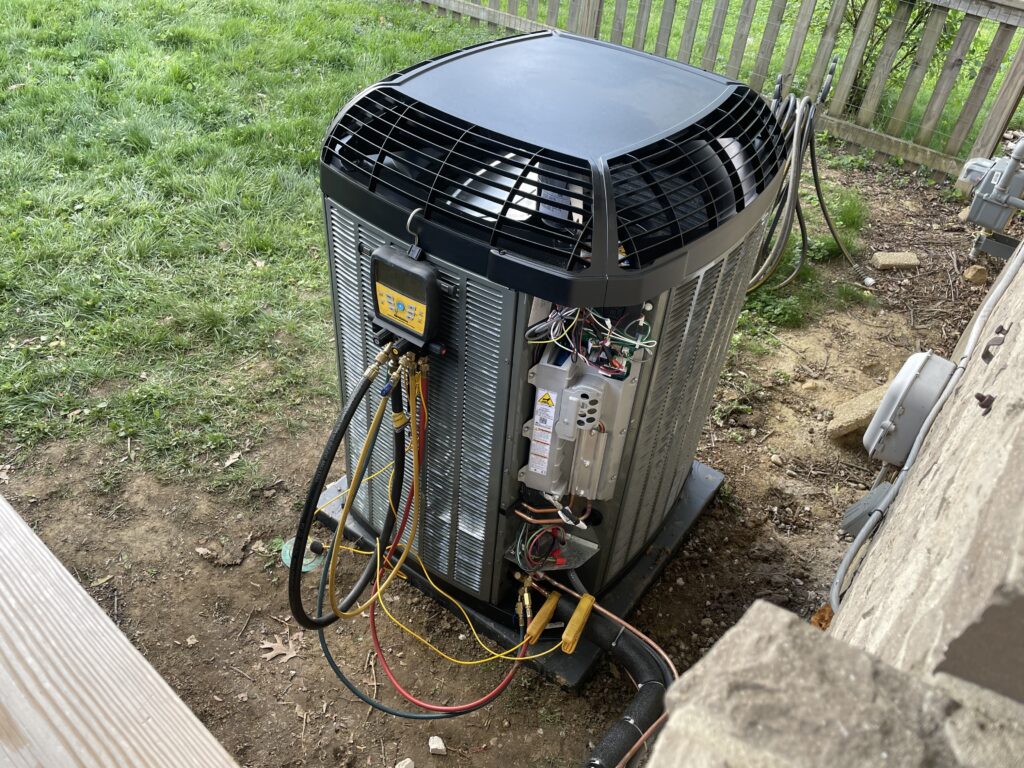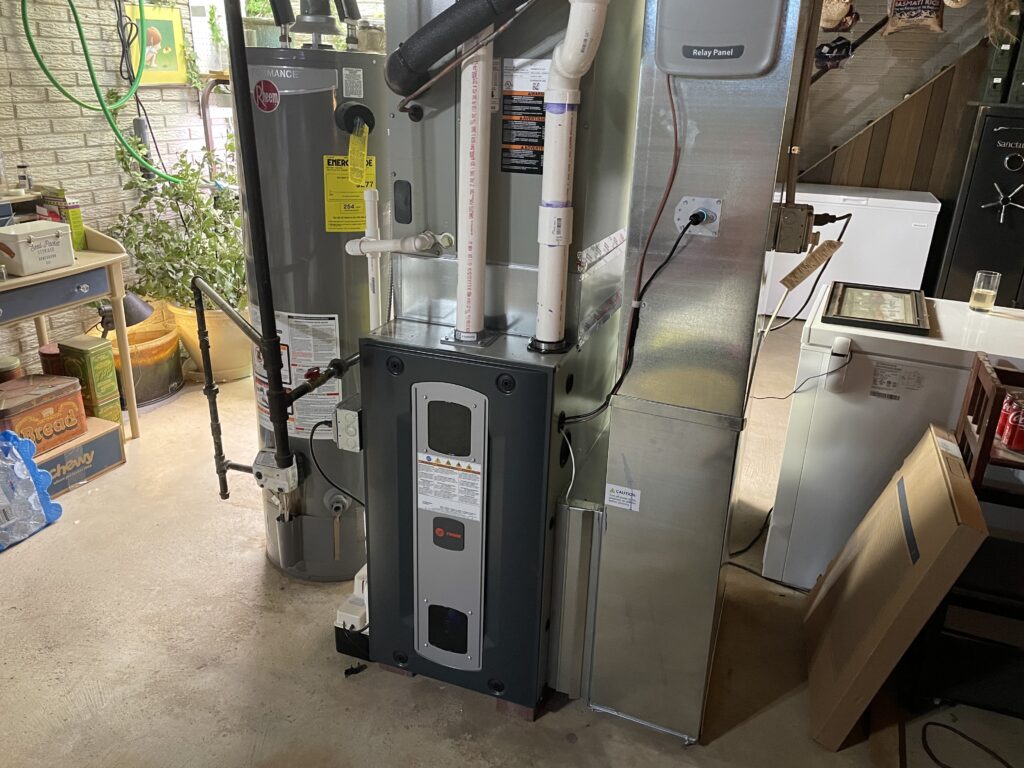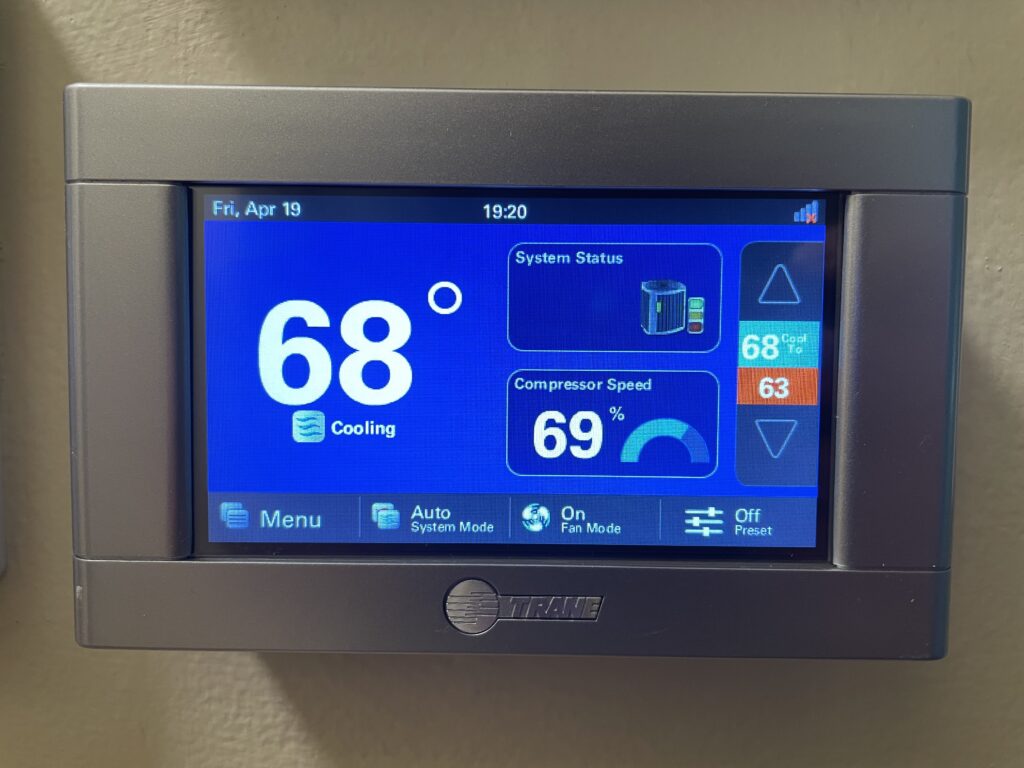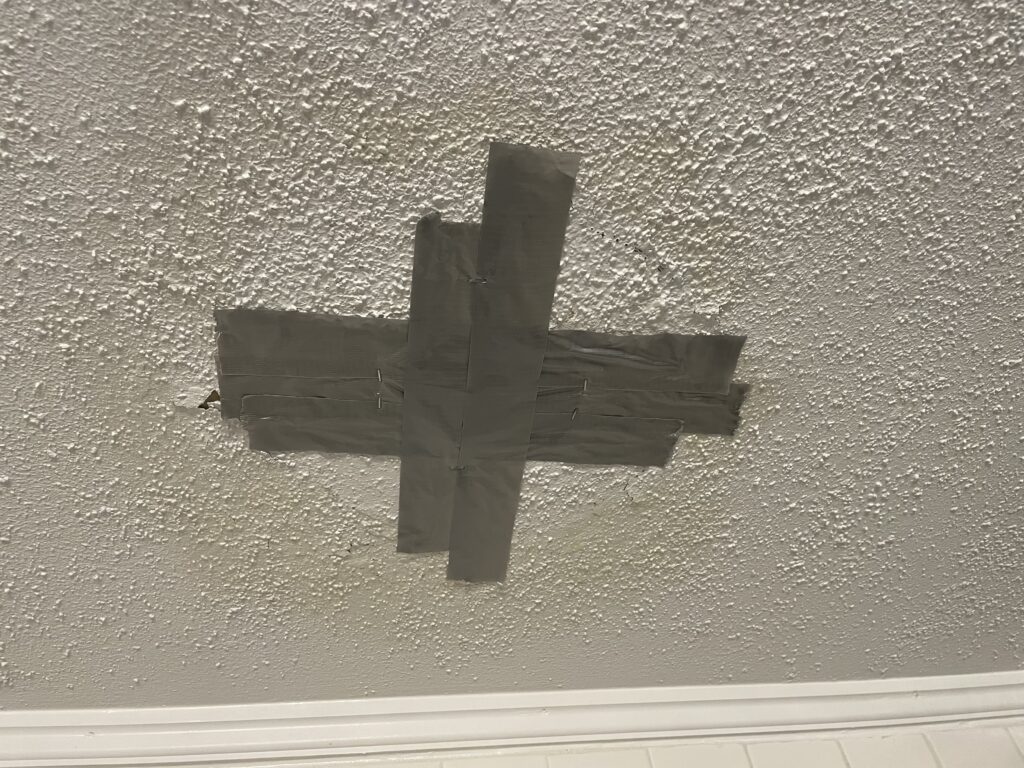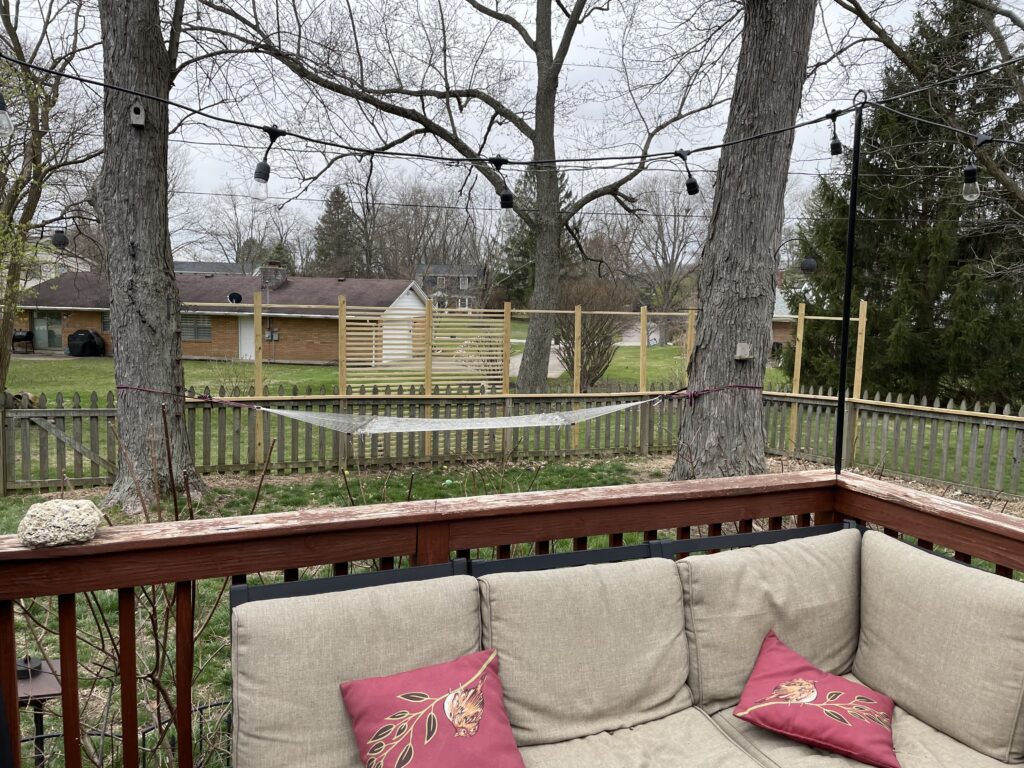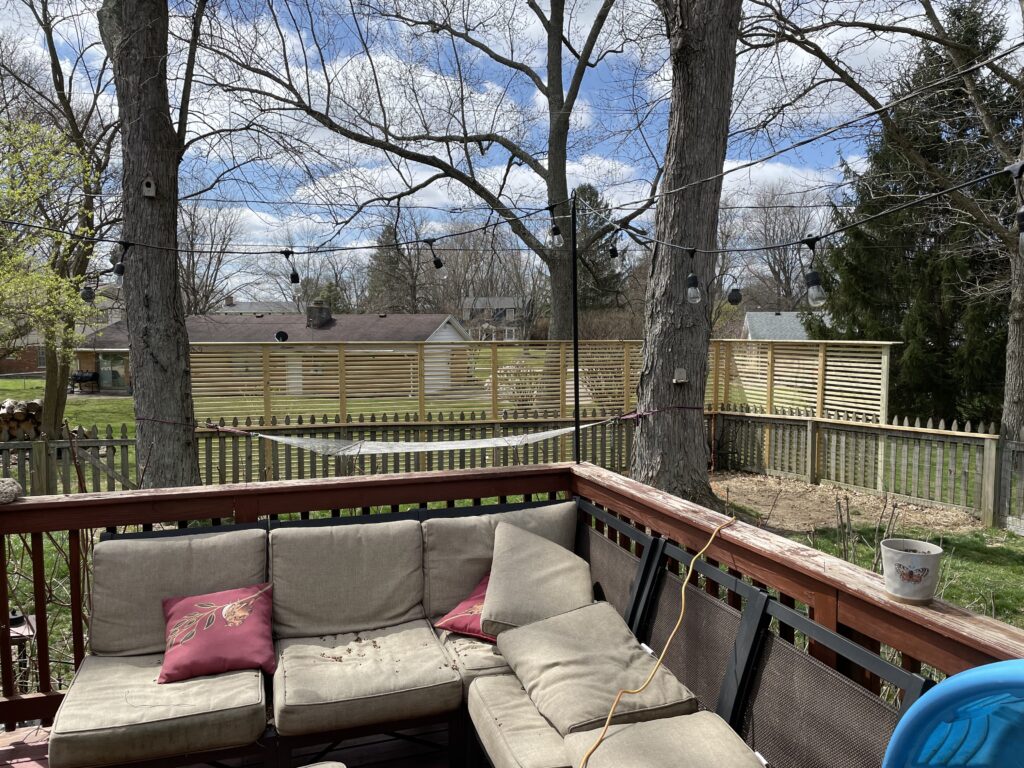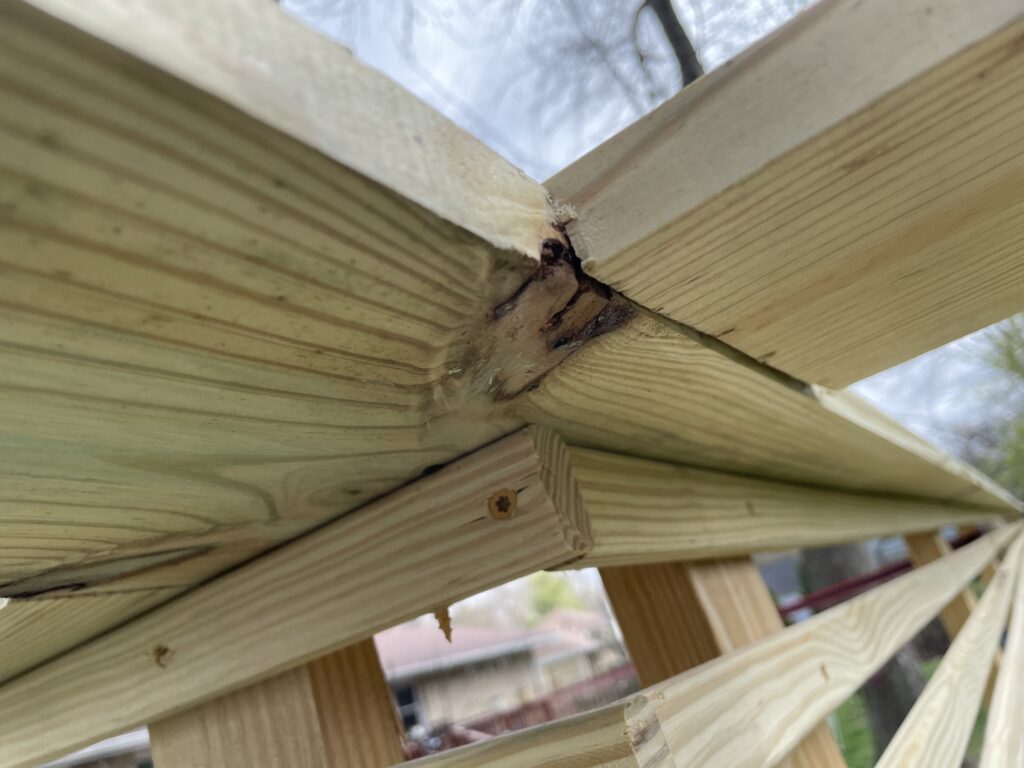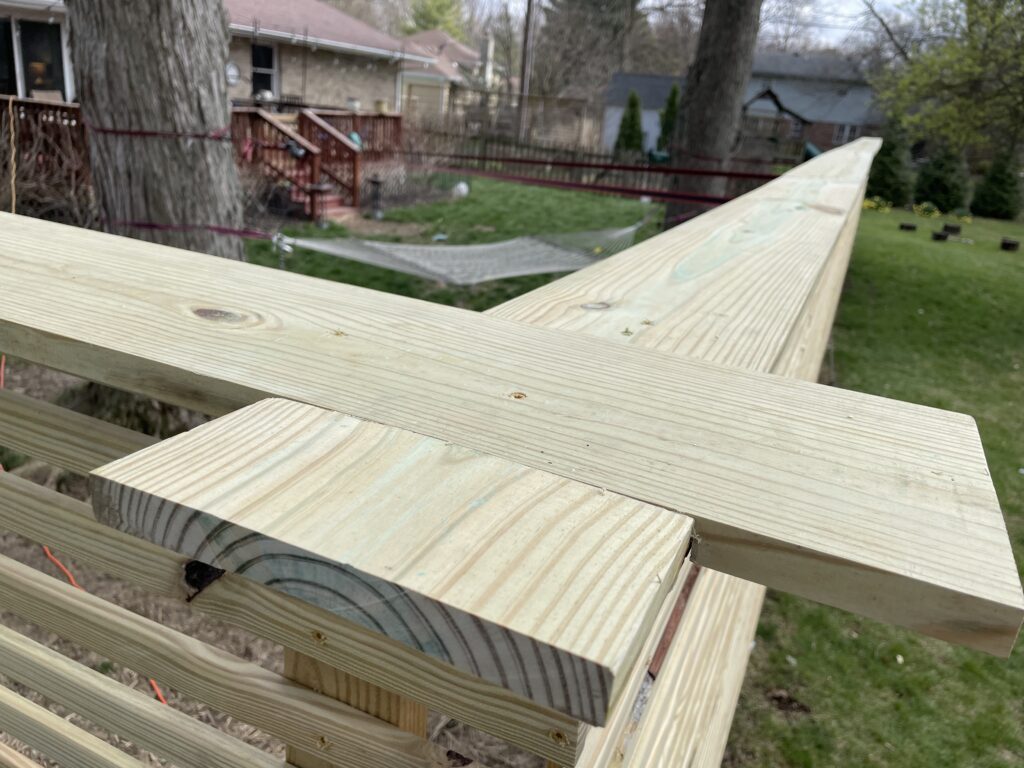Following the First World War, sections of the former No Man’s Land in France and Belgium were deemed uninhabitable for the foreseeable future, due to their lingering high levels of soil contamination of lead and various chemical weapons. These areas, assigned the moniker “Zone Rouge”, were quarantined and allowed to return to nature.
Following the Great BP Easement Purge of 2017 in Centerville, OH, lands that were formerly allowed to return to nature and then cleared, were in part allowed to return to nature again after some neighborhood hostilities. Their efforts to block us from view involved the planting of many conifers, which have gradually expanded to almost accomplish such a task. The Landscaper, who no doubt planted them at the behest of his screaming harpy, was considerate enough to do so in a manner that considered a property line buffer. It was a perfectly acceptable way to approach not wanting to see us.
The impetus to do so was upon the completion of the the BP Purge, followed by us deciding to get a professional survey of our property line, which revealed the former green belt to be primarily ours – a revelation that upset more than one neighbor, for now they were forced to utilize their own land to plant new screening, effectively reducing the perceived size of their own property. I mentioned this before, but I’ll say it again here: Surveying your property line might not make you any enemies, but it will definitely not make you any friends.
But moving along, as these conifers grew, the buffer shrank. Because trees grow. And while they had previously mowed this buffer, it shrank to the point that they couldn’t get their wide-track mower into it, because that would have involved mowing onto our side and we had since installed shrubs and gardens – with stakes to prevent any “accidental” landscaping incidents. A normal response would have been to tackle the buffer with a smaller push mower or a weedwhacker, but as The Landscaper had since been kicked out and the chore now the responsibility of their indifferent son, they instead decided to just ignore the buffer.
Which is why I call it the Zone Rouge. It’s a post-conflict abandoned strip of land. And occasionally and irregularly poisoned with isopropylamine salt of glyphosate, courtesy of the The Landscaper’s replacement (the new guy the Harpy’s fucking).

I, however, refuse to allow my property to return to the “communal” green belt. This makes my own landscaping somewhat more difficult, and hedge trimmers are now required to maintain the delineation. But there’s a greater problem at large: wildlife. Specifically, the insect variety. The blood-consuming variety. And they like overgrown flora to hide in.
To exacerbate the issue, the corner of the neighbor lot floods regularly. A french drain or perhaps a berm might reduce that problem, but as I have so subtly suggested previously, these aren’t exactly people who do anything to contribute to the community at large. Nor are they outdoorsy. So to them, “doesn’t impact me” = “I’m not going to do anything about it even though it might impact others”. Which is also why they haven’t put up any sort of containment system for their dog which constantly shits in everyone else’s yard. They’re a little young to be boomers, but they sure have the mentality.
Anyway, so following this long-winded complaining intro about bad neighbors – we have a mosquito problem. Which I have taken some steps to mitigate!
But I’ve recently received feedback that my shorter posts are more entertaining, so I’ll make this a two-part post! Haha! Teaser. You’ll have to wait to read about mosquito eradication techniques.
And now, a word from our sponsors…
–Simon

